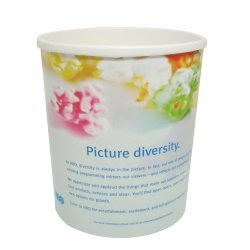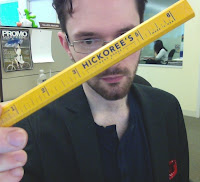One of the great recurring gags in the 1999 cult comedy Office Space is that of Milton, the mumbling, marginalized cube drone whose only request—that his misappropriated Red Swingline stapler be returned to him—is perpetually ignored. Eventually, Milton’s frustration builds from quiet rage into a literal firestorm when he burns the office down in retribution.
For office workers everywhere, it’s a familiar story. Not the arson (at least, we hope not), but the chronic shortage of office supplies. Sanity is already at a premium in cube-land, and having to deal with paperclip hoarders and fisticuffs over the last highlighter is enough to make even the most veteran 9-to-5 worker snap.
But you can help. Be a working class hero and provide the best possible office and desk items using the five tips on the right. (It’s what Milton would have wanted.)
1. Pens: They’re Still Cool
Despite increasingly inexpensive technological options (email, yelling things at Siri), pens remain a workhorse in the office, and the sales numbers prove it—writing instruments ranked second in total promotional products sales in 2011, according to a PPAI study. Still, if pens are too old-fashioned for your client’s 21st-century tastes, consider offering a technological combo. “While tech items have had tremendous popularity, items have been adapted that fit both categories,” said Dorene Lanza, director of marketing for Mobile, Alabama-based Crown Products. “A great example is the pen stylus. This is used both for writing and on iPads and other electronic devices.”
Mark Gardyn, vice president of business development for Gordon Sinclair, New Hyde Park, N.Y., gave similar advice. “It’s how you convert the basic functionality of the pen into an item that plays into the emergence of new technologies,” he said.
2. Perception is Everything
Gardyn explained that recipients are more likely to find desk space for an item if it has high perceived value. He suggested tech items such as backup batteries for portable electronics and accessories for iPads and tablets.
3. To Your Health
If the Los Angeles-level gridlock at the Whole Foods checkout line is any indication, the only thing trendier than technology these days is personal health. And while it may not be practical to offer promotional granola for your office giveaway, there are other ways to get in on the health craze. “Along with the health-conscious theme, cooler bags are a great office item,” Lanza said. “Companies are encouraging healthy living to help with insurance costs and are encouraging employees to bring their lunch to work.”
She also recommended drinkware, which not only fits the health theme, but generates impressions in and out of the office and provides a variety of branding options. Gardyn listed one example, a mug with 12 circular windows in which varying logos can be displayed. “Many Fortune 500 conglomerates have a number of brands under ownership,” he explained. “We found this item to be a great tool for marketing what we call a ‘brand identity crisis,’ allowing the parent in the largest window with all the subsidiaries surrounding.”
4. Price it Out
Because there are so many office and desk products to choose from, Lanza urged distributors to pay close attention to client needs and offer options at varying price points. “This wide range allows us to work within any distributor’s budget,” she explained. “We strive for a good, a better and a best option on our popular items so that we can accommodate all customers.”
Gardyn agreed, also stressing the importance of value. “We work with our client base to turn the focus from price to value,” he said. “We understand the price sensitivity of each promotion and offer a variety of entry-level drinkware, desk and electronic items based on the promotion and price requirements.”
5. Show and Tell
Some office and desk products, such as pens, staplers or calendars, have obvious uses, but other products that are less familiar to end-buyers may require additional instruction. “Give a sample of the item and show how it is used,” Lanza advised. “Oftentimes an item description doesn’t suffice and a customer needs to use the item to actually see the features.”


